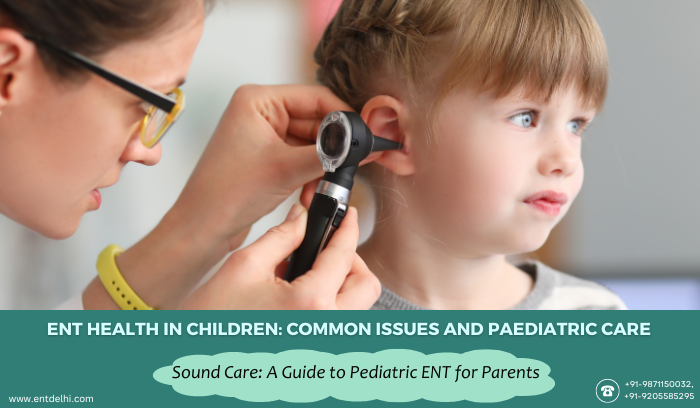When it comes to the health of our little ones, their ears, nose, and throat require special attention. Children are prone to a variety of ENT problems that can affect their overall well-being and development. In this comprehensive guide, we’ll explore the common issues that children may face in relation to their ENT health and the specialized paediatric care available to address these concerns.
ENT problems in kids can range from simple conditions like nasal congestion and earwax buildup to more complex issues such as chronic ear infections and voice disorders. One of the most prevalent problems in children is ear infections, which can cause discomfort, hearing difficulties, and even speech delays if left untreated. Understanding the signs and symptoms of ear infections is crucial for early detection and appropriate intervention.
Adenoid and Tonsil enlargement and infections are a common reason for visiting the ENT specialist. As children get exposed to the outside world their immune systems gradually develop. This sometimes results in frequent infections and/or enlargement of the Tonsils and Adenoids.
Children’s ear infections require careful evaluation and management by ENT specialists. These experts have the expertise to accurately diagnose the infection, determine its underlying causes, and prescribe the most effective treatment. From antibiotics and pain management to the consideration of ear tube placement, paediatric ENT care is tailored to ensure optimal outcomes for our little ones.
In addition to ear infections, children’s voice disorders can also have a significant impact on their communication skills and social interactions. Hoarseness, vocal nodules, and other voice-related issues can affect a child’s ability to express themselves clearly and confidently. Recognizing the signs of voice disorders in children and seeking timely evaluation is vital for proper diagnosis and tailored treatment plans.
Paediatric ENT care for voice disorders often involves a multidisciplinary approach, collaborating with speech-language pathologists and other professionals. Through voice therapy, vocal hygiene practices, and, in some cases, surgical intervention, children with voice disorders can regain their vocal quality and communication abilities.
Children also have many speech problems related to articulation and fluency. These should be picked up and treated early – the more we delay addressing problems related to speech the more difficult it gets to treat them. Early intervention is the key to a successful outcome. We have a dedicated speech therapist who takes care of these needs.

